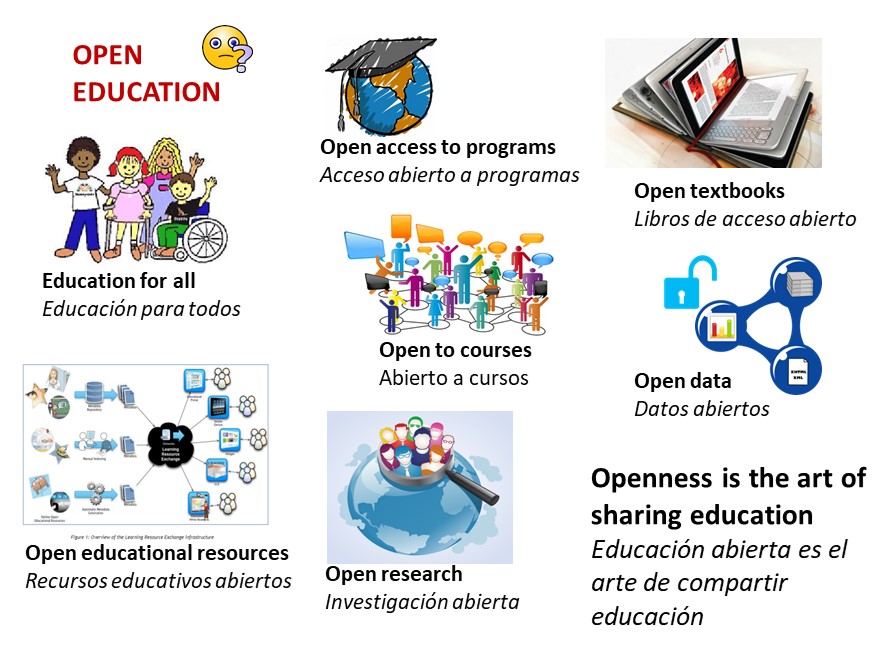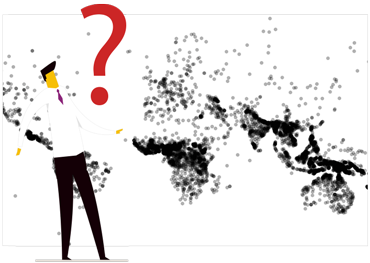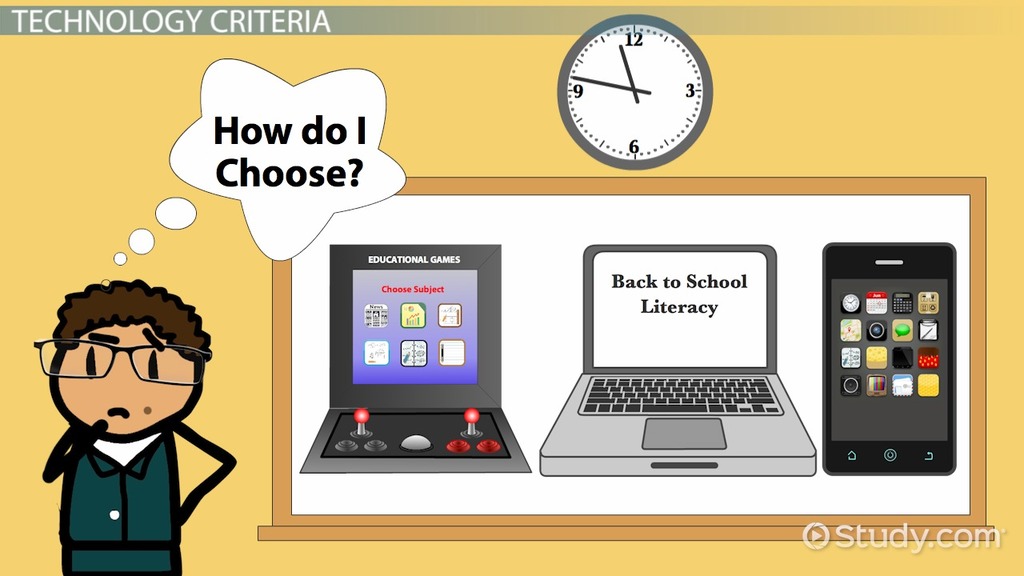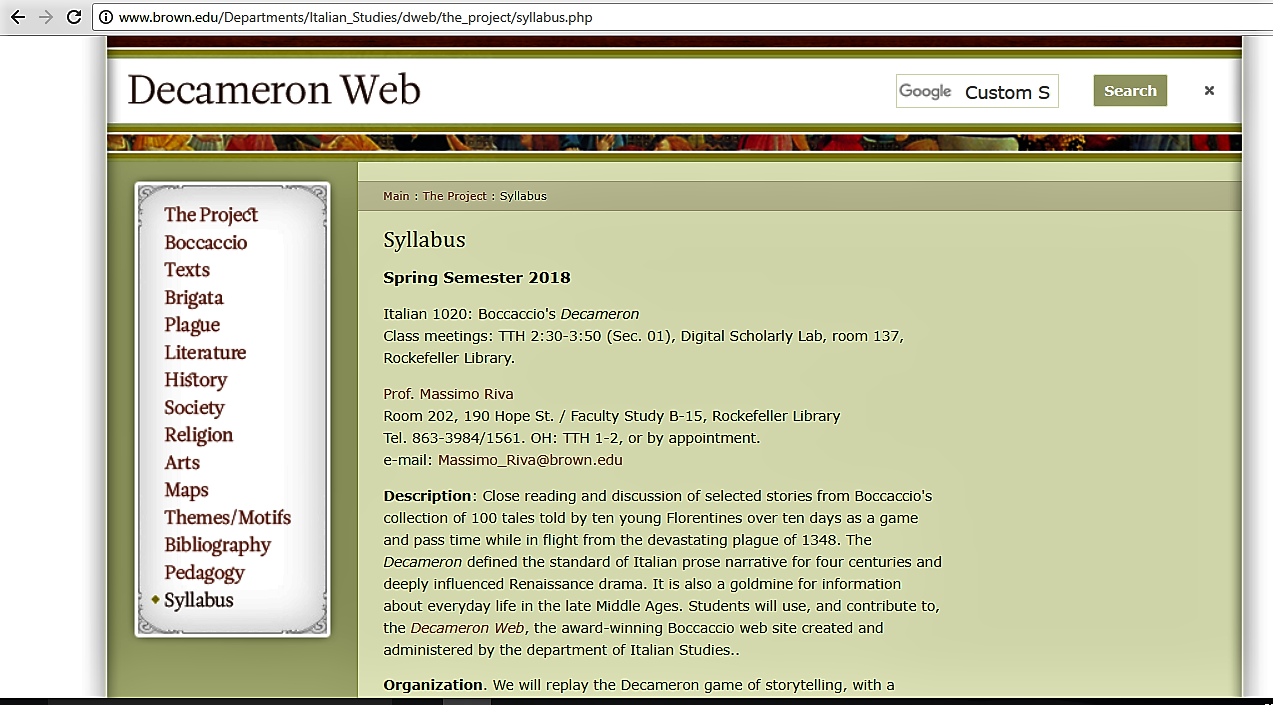Massive Open Online Courses, massive because they target thousands
of people, open because their content is free to learners, online because they
can be accessed by internet, and course because they follow a structured
learning.
David Cornier coined the term MOOC and the first MOOC was offered
in 2008: “Connectivism and Connected Knowledge” (CCK08) which was run by George
Siemens and Stephen Downes. From then onward, educational institutions all
over the world have run MOOCs which have attracted large and massive participation
of learners in the same course. Class Central, a search engine for free MOOCs,
claims that currently 81 million people are learning with MOOCs in 9,400 courses
run by more than 800 universities. Among the top MOOC providers we have Coursera,
edX, XuetangX, Udacity, FutureLearn, NovoEd, Canvas, Iversity, Udemy.
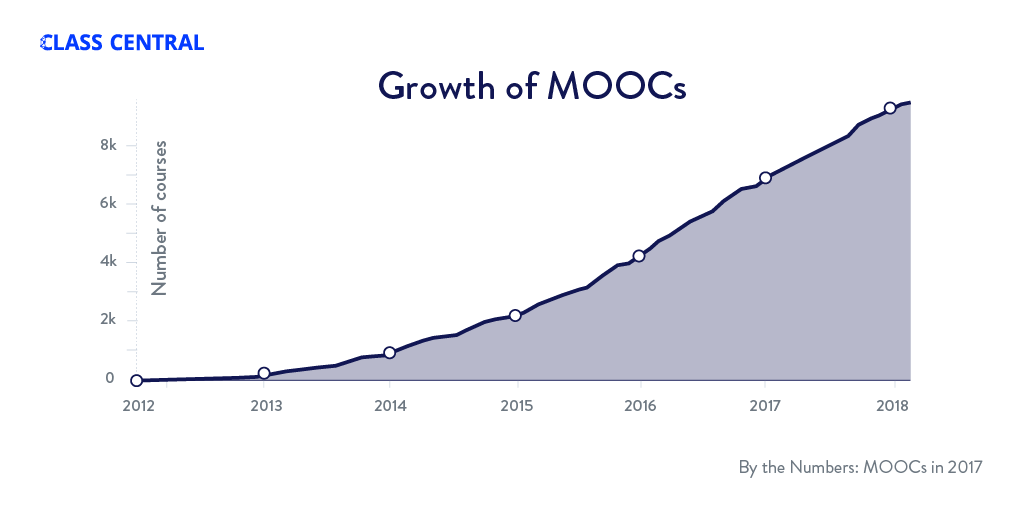 The main concept of MOOCs is based on social and
connectivist learning. One of the MOOCs challenges is the learner independence.
Self-directed learning has to be one of the primary strengths of learners,
while in a more traditional classroom the instructor takes the responsibility of
directing the learning (Kop 2011). According to Kop (2011) another of the
challenges is presence as a direct influential factor to motivation and
engagement of the learner: “the higher the level of presence, the higher the
level of involvement in the online activity”.
The main concept of MOOCs is based on social and
connectivist learning. One of the MOOCs challenges is the learner independence.
Self-directed learning has to be one of the primary strengths of learners,
while in a more traditional classroom the instructor takes the responsibility of
directing the learning (Kop 2011). According to Kop (2011) another of the
challenges is presence as a direct influential factor to motivation and
engagement of the learner: “the higher the level of presence, the higher the
level of involvement in the online activity”.
Kop also claims that MOOCs learners need to adapt to different
critical literacies. As there is not educator guiding the learners, the learner
has to command critical thinking skills to challenge ideas and beliefs, to
search for further relevant information
and validate it, to understand the way
information is represented by media, to communicate and collaborate with others
producing and editing information in a variety of formats.
Stacey (2013) is more concerned about the pedagogy aspect of
MOOCS: “how can you effectively teach thousands of students simultaneously?” According to Stacey the high rates of MOOCs
dropouts are an indication of the need for a more innovative pedagogy. He
claims that at the beginning MOOC courses displayed potential pedagogical innovation:
social media & open education, connectivism, personal learning
environments, learning analytics. Courses like DS106 or PLENK2010 where built around
four main concepts aggregate, remix, repurpose, feed forward. However, this potential has been left unexplored
and the subsequent growth of MOOCs has been a step backward in pedagogy. Some
courses transferred the “campus-based didactic methods of teaching to the
online environment”, although others tried to include more social engagement
through forums and discussions and even peer-to-peer interaction. Yet, they are
still using objectivist and behaviourist methods of teaching and learning under
the assumption that with such a large amount of learners, social learning is
not feasible and the courses focus more on a digital interaction with the
platform.
Stacey also claims the best online pedagogies are those that
implement connections between students, between students and the instructor and
between students and others and they utilize the open web, open content and make
continuous improvements to the courses. Learning happens through relationship.
MOOCs and OERs need the environment of communities and
networks where their social learning can take place in order to disseminate and
find resources, discussed idea and connect with peers. This brought up the
concept of PLE (personal learning environment) that in turn has developed the
PLN (personal learning networks) which each learner construct to take control
of its own formal and informal learning. A PLN puts the focus on the people in
the network rather than on the technology.
Wikipedia defines PLN as: “an informal learning network that
consists of the people a learner interacts with and derives knowledge from in a
personal learning environment. In a PLN, a person makes a connection with
another person with the specific intent that some type of learning will occur
because of that connection”.
Video Source: "What is a MOOC", Narrated by Dave Cormier
Video by Neal Gillis - Research by: Bonnie Stewart Alexander McAuley George Siemens Dave Cormier - CC-BY 2010.
SPANISH
El Mundo de los MOOC
Los MOOC
(acrónimo en inglés de Massive Open On-line Course), Curso On-line Masivo y
Abierto, son masivos porque están dirigidos a miles de personas, son abiertos
porque su contenido es gratis para los estudiantes, son online porque su acceso es a través de internet y son cursos porque
siguen una estructura de aprendizaje.
David Cornier
acuñó el término de MOOC y el primer MOOC:
“Connectivism and Connected Knowledge” (CCK08) fue impartido en 2008 por George Siemens y Stephen Downes. Desde
entonces, organismos e instituciones educativas de todo el mundo han impartido
cursos MOOC que han atraído grandes participaciones de estudiantes en el mismo
curso. Class Central, un motor de búsqueda de MOOC gratuitos, sostiene que actualmente
hay 81 millones de personas aprendiendo con cursos MOOC en 9,400 cursos impartidos
por más de 800 universidades. Entre los proveedores de MOOC más importantes se
encuentran Coursera, edX, XuetangX, Udacity, FutureLearn, NovoEd, Canvas, Iversity,
Udemy.
El concepto de
base de los MOOC es el aprendizaje social
y conectivista. Uno de los retos más desafiantes de los MOOC es la
independencia del estudiante. El aprendizaje autónomo se encuentra entre las principales
habilidades que los estudiantes deben dominar, mientras que en un aula
tradicional el instructor está a cargo de la responsabilidad de dirigir el
aprendizaje (Kop 2011). Según Kop (2011) otro de los retos que presentan los
MOOC es la presencia como un factor de gran influencia para la motivación e
implicación del estudiante: “cuanto más alto es el nivel de presencia, más alto
es el nivel de implicación en la actividad online”.
Kop también
sostiene que los estudiantes de MOOC han de adaptarse a una alfabetización
crítica diferente. Puesto que no hay un educador que guíe a los estudiantes, el
estudiante ha de poseer habilidades de pensamiento crítico para desafiar ideas
y creencias, buscar más información relevante y validarla, entender la forma en
que la información es representada por los medios, para comunicar y colaborar
con los demás produciendo y editando información en una variedad de formatos.
A Stacey (2013) le
preocupa más la cuestión de la pedagogía de los MOOC: “¿cómo puede uno enseñar
eficazmente a miles de estudiantes simultáneamente?”. Según Stacey los altos
niveles de abandono de los MOOC son una indicación de que se necesita una
pedagogía más innovadora. Stacey sostiene que durante la era inicial de los
MOOC los cursos exhibían una innovación pedagógica potencial: redes sociales y educación
en abierto, conectivismo, entornos personales de aprendizaje, recogida de datos
de aprendizaje (learning analytics).
Cursos como DS106 o PLENK2010 se construyeron alrededor de cuatro conceptos principales
agregar, re-mezclar, re-diseñar, retro-alimentar. Sin embargo, este potencial
se ha quedado sin explorar y el subsecuente crecimiento de los MOOC ha supuesto
un retroceso en pedagogía. Algunos cursos simplemente han transferido “los
métodos didácticos de enseñanza en campus al entorno online”, aunque otros cursos han intentado incluir una
mayor implicación social a través de foros, debates e interacciones entre
pares. Aun así, todavía se sigue aplicando métodos de enseñanza conductistas y
de objetivos al asumir que con tales participaciones masivas de estudiantes, el
aprendizaje social no es viable y los cursos terminan enfocándose más en una
interacción digital con la plataforma online.
Stacey sostiene
además que las mejores pedagogías online son aquellas que implementan
conexiones entre estudiantes, entre estudiantes y el instructor y entre
estudiantes y demás individuos y que utilizan web abierta, contenido abierto y
realizan continuas mejoras de los cursos. El aprendizaje se produce a través de
las relaciones entre los estudiantes.
Los MOOC y los
OER (recursos educativos abiertos) necesitan el entorno de comunidades y redes donde
su aprendizaje social pueda tener lugar para poder diseminar y encontrar
recursos, debatir ideas y conectarse con los pares. Esto ha hecho que surja el
concepto de PLE (personal learning environment ) entorno personal de
aprendizaje que a su vez ha desarrollado los PLN (personal learning networks) o
redes personales de aprendizaje que cada estudiante construye para tomar
control de su propio aprendizaje formal e informal. Un PLN pone el foco de
atención en los individuos de la red en lugar de en la tecnología.
Wikipedia define
una PLN del siguiente modo: “una red de aprendizaje personal (PLN por sus
siglas en inglés: Personal Learning Network) es un conjunto de herramientas,
procesos mentales y actividades que permiten compartir, reflexionar, discutir y
reconstruir conocimientos con otras personas, así como las actitudes que
propician y nutren este intercambio.”
Sources:
An Introduction to MOOCs, Openness and innovation in elearning, Open University
Kop, R. (2011) ‘The challenges to connectivist learning on open online networks: learning experiences during a massive open online course’, International Review of Research in Open and Distance Learning.
Stacey, P. (2013) ‘The pedagogy of MOOCs’, Musings on the edtech frontier.

 The main concept of MOOCs is based on social and
connectivist learning. One of the MOOCs challenges is the learner independence.
Self-directed learning has to be one of the primary strengths of learners,
while in a more traditional classroom the instructor takes the responsibility of
directing the learning (Kop 2011). According to Kop (2011) another of the
challenges is presence as a direct influential factor to motivation and
engagement of the learner: “the higher the level of presence, the higher the
level of involvement in the online activity”.
The main concept of MOOCs is based on social and
connectivist learning. One of the MOOCs challenges is the learner independence.
Self-directed learning has to be one of the primary strengths of learners,
while in a more traditional classroom the instructor takes the responsibility of
directing the learning (Kop 2011). According to Kop (2011) another of the
challenges is presence as a direct influential factor to motivation and
engagement of the learner: “the higher the level of presence, the higher the
level of involvement in the online activity”.
